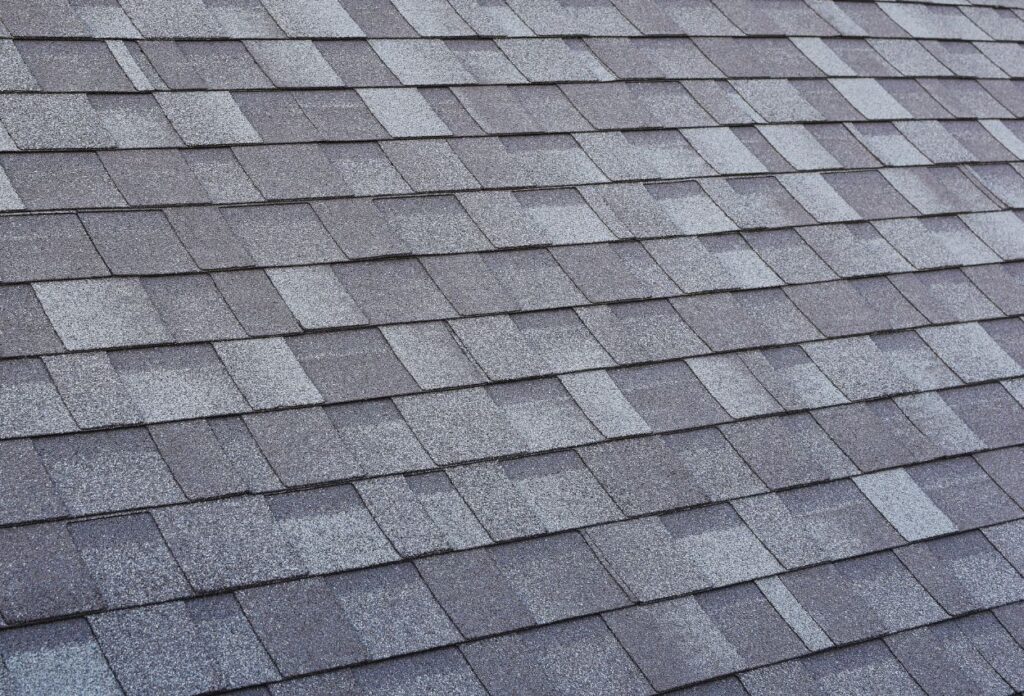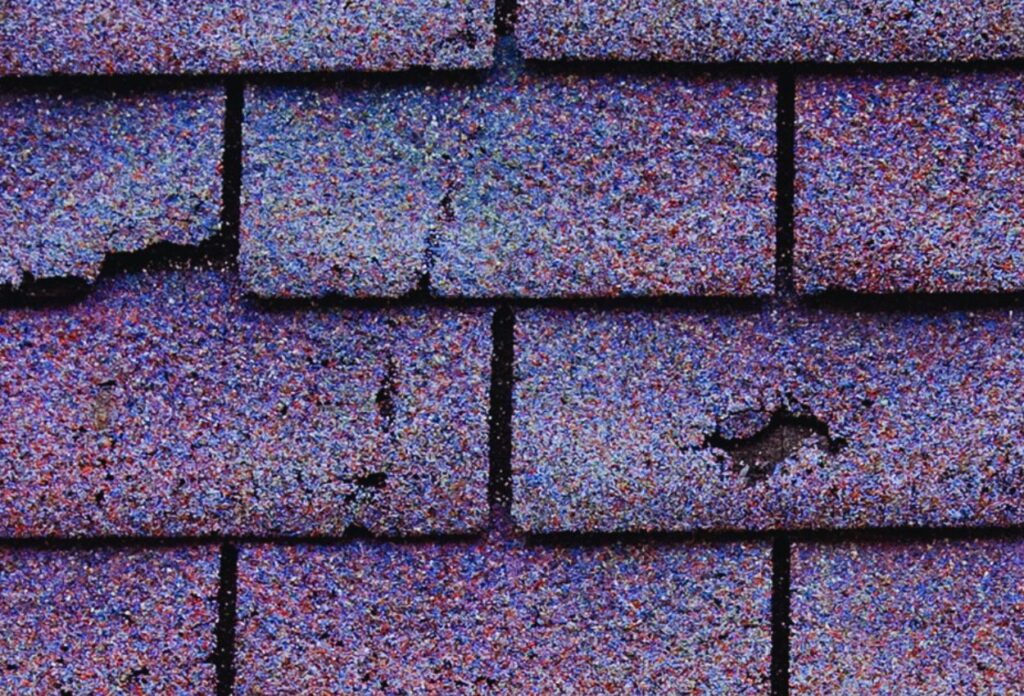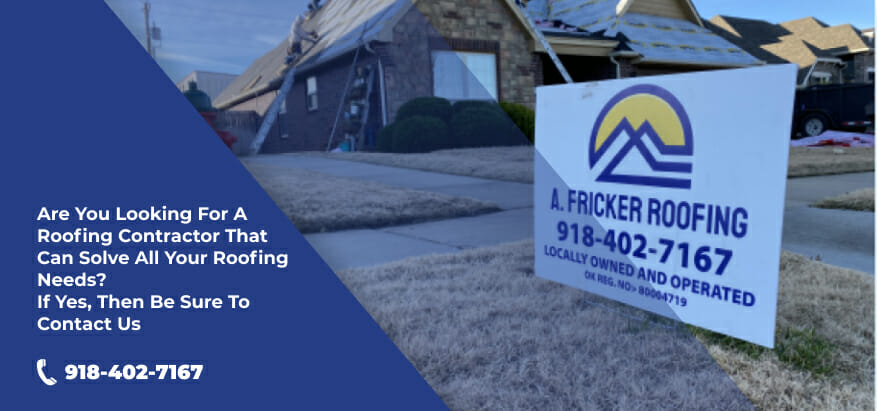Oklahoma homeowners know that unpredictable weather can throw all kinds of curveballs, and hailstorms are no exception. Over the last few years, the Sooner State has witnessed a rise in the number of hail storms, so as a homeowner, you need to be prepared if you live in this beautiful area.
Though hail can damage any roof, the material that is most vulnerable to hail stones is asphalt shingles, and most homes in Tulsa and the surrounding areas have a shingle roof. This guide will help you understand how hail impacts asphalt shingles, what to look for after a storm, and if insurance covers the damage.
Why Are Asphalt Shingle Roofs Vulnerable to Hail Damage?

Asphalt shingles are Oklahoma’s favorite roofing choice. This has been the case for years, and it is likely to continue in the future, too. You get several benefits with an asphalt shingle roof, but one limitation is its vulnerability to harsh weather conditions. Because of this, they can be more susceptible to hail damage than other types of roofing materials. Shingles are generally made from asphalt, which is durable to a point but can get damaged from the impact of hailstones, especially during larger storms.
Material Composition: Shingles are typically composed of asphalt, fiberglass, and mineral granules. While tough enough to handle general weather, a sudden impact from hailstones can displace granules, crack the asphalt layer, or even cause complete punctures.
Lifespan: Even the best asphalt shingles are designed to last around 20–30 years. However, repeated hail exposure can quickly reduce that lifespan, causing you to replace shingles or even the entire roof prematurely.
Also Read: How Long Do Shingle Roofs Last?
Hail Size and the Types of Shingles It Can Damage
Hailstorms can bring hailstones ranging from small pellets to stones as large as golf balls, and the size of the hail plays a big role in determining the extent of damage it causes to a shingle roof.
Pea-Sized Hail (Up to 1/4 inch):
Hailstones this small are generally too light to cause significant damage to most shingle roofs. While they may knock a few granules loose from older or worn shingles, they typically don’t lead to noticeable structural issues.
Dime to Quarter-Sized Hail (1/2 to 1 inch):
When hail reaches around the size of a dime or quarter, it can start to cause minor damage, particularly on shingles that are nearing the end of their lifespan or have pre-existing wear. Granule loss, small dents, or bruising may occur, especially on traditional asphalt shingles.
Golf Ball-Sized Hail (1-1/2 to 2 inches):
Hail this size is large enough to cause significant damage to most types of shingles, even newer or high-quality ones. However, Class 4 impact-resistant shingles are built to withstand this.
Larger Hail (Over 2 inches):
Hailstones larger than 2 inches are extremely dangerous for shingle roofs, often causing severe damage. Though they are not common in Oklahoma, they can shatter or dislodge shingles entirely.
What Does Hail Damage Look Like on Shingles?
Hail doesn’t damage every shingle the same way; it can vary depending on the size and speed of the hail, as well as the age and quality of your roof. Here’s a rundown of the most common types of hail damage to watch for:
Granule Loss On Shingles
One of the most common signs of hail damage on roof shingles is granule loss. Granules are tiny particles on the top layer of the shingle, which protect the asphalt layer from sunlight and impacts. When a strong force, like hailstones, strikes a shingle roof, it can take the outer layer off.
Granule loss often appears as bald patches or areas where the color seems faded or inconsistent. This exposes the asphalt layer to the elements, making the shingle more vulnerable to further damage, leaks, and UV damage.
Cracks In Shingles

Hailstones can hit with enough force to create cracks or splits in shingles, especially if the shingles are older. This is a common occurrence with both asphalt shingles and wood shakes.
Cracked shingles lose their integrity, potentially leading to water leaks and further deterioration from exposure.
Bruising/Denting
Bruising occurs when a hailstone leaves a soft spot or an indentation on the shingle, even if there isn’t a visible crack. You can often detect a bruise by gently running your hand over the surface of the shingle; it may feel softer or slightly indented compared to the surrounding area.
The bruises and dents are usually noticeable on the corners of the shingles, as these bear the brunt more. Although it may seem minor, bruising can allow water to seep through the shingle, gradually weakening the underlying structure of the roof.
Does Insurance Cover Hail Damage On A Roof?
In Oklahoma, most homeowners insurance policies cover hail damage, but it’s always wise to check your specific policy. Here’s what to expect:
Coverage Type: Some policies cover the actual cash value (ACV) of your roof, which factors in depreciation, while others may offer replacement cost value (RCV) coverage, paying the full cost to replace the damaged roof. Make sure you know what your policy covers.
Deductibles: Keep in mind that most policies require a deductible payment. Knowing your deductible can help you plan ahead if you need coverage for hail damage.
If you need to file a claim, thorough documentation is essential as insurance companies generally require proof of damage. Photos and repair estimates are often needed to file a claim effectively. Having clear evidence of the damage helps ensure the insurance process goes smoothly and supports the validity of your claim.
The Risks of Ignoring Hail Damage
It might be tempting to ignore minor damage if your roof seems mostly intact, but hail damage often leads to bigger issues over time. Here’s what can happen if hail damage goes unaddressed:
Leaks and Water Damage: Even minor cracks or bruising can let water seep in over time, which can cause leaks, rot, and mold in your roof’s underlayment and even in your home’s interior.
Shortened Roof Lifespan: Hail damage often means shingles need to be replaced sooner than expected. Ignoring this damage can result in premature roof failure and a much more expensive roof replacement later.
Decreased Home Value: A damaged roof can hurt your home’s value and curb appeal, especially if you’re thinking of selling in the future. Prospective buyers might be deterred by visible hail damage, knowing it’s a potential headache.
We Can Help With Hail Damage Roof Repair
When dealing with hail damage, look no further than the team of A. Fricker Roofing and Waterproofing. We are a trusted roofing company that brings not only years of experience but also an eye for detail that can make all the difference. Here’s how we can help:
Thorough Inspections: Our qualified roof inspectors look for the kinds of damage that most homeowners overlook, like subtle bruising and micro-cracks.
Expert Repairs and Replacement: Whether you need a few shingles replaced or a full roof replacement, we ensure the work is done to withstand future hailstorms.
If you’re unsure about the condition of your roof after a storm, don’t wait. Contact us today at (918) 402-7167 today for consultation.

